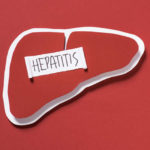Weight-based treatment dosing for Hepatitis C
The following article is from hepatitisneighborhood.com, a website of priorityhealthcare.com.
While the basic information in this article is very enlightening, I also like to read between the lines.
What is most relevant here? First of all, that the study focused on genotype 1 (the most common in North America, with approximately 70% of patients). The study verified that genotype 1 is hardest to treat with current conventional (read, interferon) therapy.
Next, I find it very telling that the response was TWICE AS GOOD with weight based dosing. That begs the question—why isn’t everyone with genotype 1 treated based on weight?
Then, I found it very telling that even at the best-possible response they did no better than 29 percent of patients with SVR (with only a measily 16% at standard dosing).
Then, they talk about relapses. So, as I understand it, 29% responded but then 22% of them relapsed. So, isn’t that a success rate that is closer to just 20% of patients, even with the superior weight dosing?
Finally we have the side-effects information. Wow! Discontinuation for adverse events were nearly neck and neck at 18% vs 17%. So, if that were the only criteria, I’d certainly choose weight based dosing (whether African American or not). However, If 29% responded, but 22% of them relapsed and 18% dropped out due to adverse effects, how many were actually helped?
Food for thought, don’t you agree?
African-Americans with Hepatitis May Benefit More from Weight-Based Ribavirin
by John C. Martin
Article Date: 12-08-04
A new, large study finds that African-Americans diagnosed with hepatitis C (HCV) respond better to treatment when the antiviral drug, ribavirin, is dosed based on weight rather than standardized.1
Lower SVR Found
Previous studies have found that African-Americans with HCV have lower response rates to treatment compared to other ethnic groups for unknown reasons.2,3 In hepatitis C, there are several genotypes, or species, of virus that can infect any one person. Studies have found that genotype 1, which also happens to be the most common, is the most difficult to treat.4,5
But “the high prevalence of HCV genotype 1 is insufficient to explain the low SVR [sustained virologic response] rates in this population,” write Ira Jacobsen, MD, in the department of Gastroenterology & Hepatology at Cornell University, and his colleagues.
How Does Ribavirin Impact SVR Rates?
So, Jacobson and his team set out to determine African-Americans’ response to combination therapy using peginterferon alfa-2b (PEG-Intron/Schering-Plough) with ribavirin, as well as to determine the optimal dose of ribavirin in this group. Of 5000 patients who were selected at random to receive peginterferon alfa-2b with either weight-based doses or fixed doses of ribavirin, 387 African-Americans with genotype 1 HCV were analyzed for this study. All the patients were taking part in an unrelated clinical study.
Three hundred sixty-two patients who weighed more than 65 kg (143 lbs) received 1.5 micrograms (mcg) of peginterferon alfa-2b per kilogram of body weight (1.5 µg/kg) once per week combined with either a standard dose of 800 milligrams (mg) of ribavirin, or a weight-based dose of 800 to 1400 mg. The criteria were as follows:
- Those weighing less than 143 lbs (less than 65 kg) received 800 mg
- Those weighing between 143 lbs and 187 lbs (65-85 kg) received 1000 mg
- Those weighing between 189 lbs and 229 lbs (86-104 kg) received 1,200 mg
- Those weighing between 231 lbs and 273 lbs (105-124 kg) received 1,400 mg
Therapy lasted for a total of 48 weeks, with 6 months of post-treatment follow-up. Patients who remain virus-free for a minimum of 6 months following the end of therapy are considered to have achieved a sustained virologic response (SVR) to the treatment.6
After the follow-up period, it was found that twice as many African-American patients who received weight-based ribavirin doses responded to therapy compared to those who were given the standard dose. Of 174 patients who received weight-based doses, 29 percent responded. That compares to only 16 percent of those who received the standard 800 mg dose, Jacobson and his associates reported, a difference they considered significant. Further, relapses occurred in 22 percent of patients receiving weight-based ribavirin versus nearly a third of those who received standard doses, they wrote.
Dealing with Ribavirin Side Effects
Anemia—a common side effect of ribavirin—was more common in those who received weight-based dosing, they noted (47 percent of those taking weight-based doses had anemia compared to 29 percent of those on the fixed dose). As a result, “dose reductions of ribavirin (12% v 8%) and erythropoietin use were more common with weight-based dosing, but overall safety for the two groups was similar,” the researchers wrote. “Discontinuations for adverse events were 18% in weight-based dosing and 17% for standard dosing, with 25 severe adverse events in each group.”
Erythropoietin is a hormone that helps regulate red blood cell production in the body. It is also used as an anemia treatment.
“Weight-based dosing of ribavirin offers a significant advantage in the treatment of African-American patients infected with HCV genotype 1,” the study investigators concluded.
- Jacobson I, Brown R Jr., McCone J et al. Weight based ribavirin dosing improves virologic response in HCV-infected genotype 1 African-Americans (AA) compared to flat dose ribavirin with peginterferon alfa-2b combination therapy. 55th Annual Meeting of the American Association for the Study of Liver Diseases. 2004 Oct 29-Nov 2. Boston, MA.
- Muir AJ, Bornstein JD, Killenberg PG; Atlantic Coast Hepatitis Treatment Group. Peginterferon alfa-2b and ribavirin for the treatment of chronic hepatitis C in blacks and non-Hispanic whites. N Engl J Med 2004 May 27;350(22):2265-71.
- McHutchinson JG, Poynard T, Pianko S et al. The impact of interferon plus ribavirin on response to therapy in black patients with chronic hepatitis C. The International Hepatitis Interventional Therapy Group. Gastroenterology 2000 Nov;119(5):1317-23.
- Trepo C. Genotype and viral load as prognostic indicators in the treatment of hepatitis C. J Viral Hepat 2000 Jul;7(4):250-7.
- Fried MW. Viral factors affecting the outcome of therapy for chronic hepatitis C. Rev Gastroenterol Disord 2004;4 Suppl 1:S8-S13.
- Berg T, Kronenberger B, Hinrichsen H et al. Triple therapy with amantadine in treatment-naïve patients with chronic hepatitis C: a placebo-controlled trial. Hepatology 2003 Jun;37(6):1359-67.
John Martin is a long-time health journalist and an editor for Priority Healthcare. His credits include coverage of health news for the website of Fox Television’s The Health Network, and articles for the New York Post and other consumer and trade publications.







